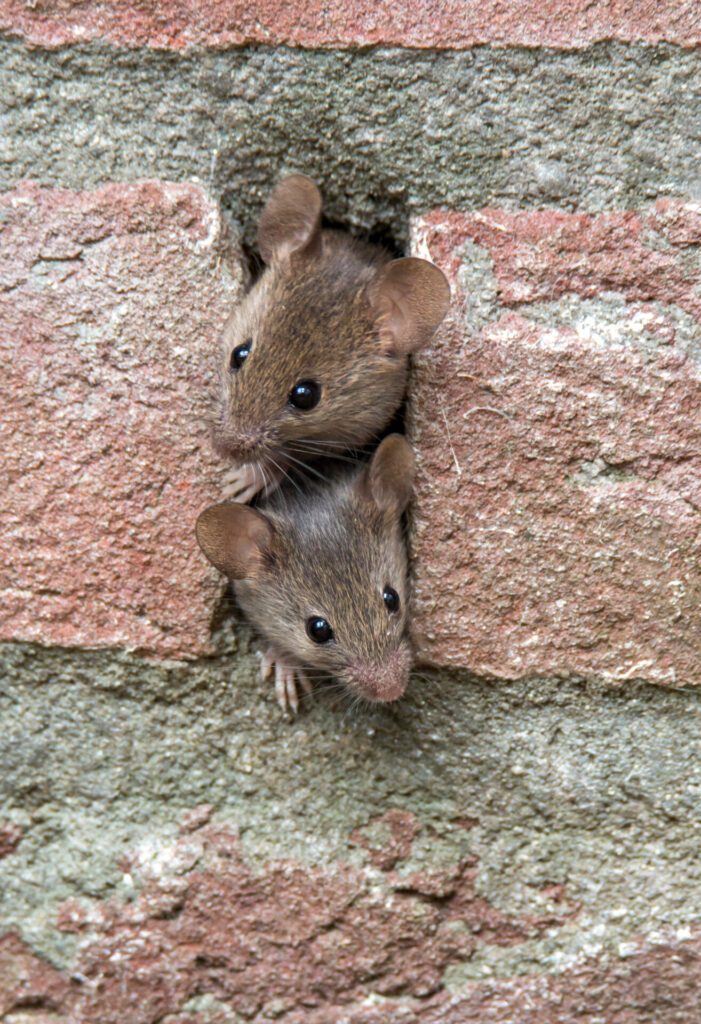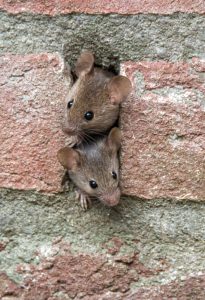Roughly 21 million American homes deal with mice every year. Learning why mice typically move into human spaces and the most common mouse entry points can help you keep them out of your home for good. Explore these details and tips for preventing mice from entering your home to ensure some mouse-free peace of mind.
Why Understanding Mouse Entry Points Matters
When you know where mice might enter your home, you can seal up potential entry points and block them from ever breaking in, which is one key to keeping your property and everyone in it happy, healthy, and safe.
The Risks Associated with Mice in Your Home
Mice have voracious appetites, often eating up to 20 times daily. This means they will immediately start invading your pantry and so much more. Mice will gnaw on just about anything, including insulation, structural elements, and even wiring. Over time, infestations can lead to damage throughout your home and an increased risk of electrical shorts. Additionally, these messy and inquisitive critters can contaminate your home and expose you and your family to health risks, including:
- Allergies and asthma
- Salmonella
- Leptospirosis
- Rat bite fever
- Hantavirus
- Ticks, fleas, mites, and other secondary pests carried in by mice
Common Entry Points for Mice
No matter how hard you try to eliminate an infestation, if you don’t address (and monitor) potential entry points, you will still struggle with mice. You could be looking for signs of mice in the attic when, in reality, they are actually getting in somewhere else entirely.
Mice are excellent climbers, jumpers, and swimmers. Not to mention, they can wriggle their way through openings as tiny as the width of a dime. Explore some of the most common areas where mice enter homes so you can better guard against these agile invaders.

Gaps and Cracks in the Structure
Think of mice as little Houdinis. They can slip through seemingly impossible spots to seek out food and shelter. Gaps, cracks, and holes in foundations, walls, floors, and around doors and windows can leave your home vulnerable.
Utility Lines and Vents
The opening around utility lines may be just enough to let these scampering scoundrels inside. They may also exploit the openings provided by vents, along with gaining entry via the chimney. In rare instances, mice can even crawl through pipes and sewer lines, although this is typically a last resort option.
Garage and Basement Entry
Every time your garage door opens and closes, it could potentially be welcoming in mice. Additionally, any gaps below the door’s seal can also give them easy access. Spots underneath decks and porches are often overlooked danger zones. In short, any openings could lure mice (and other pests) directly into crawl spaces and basements.
Mouse Behaviors That Lead Them Indoors
Now that you know a little about how mice often get into homes and other buildings, let’s dive a little deeper into why they want to be inside.
Seasonal Patterns
Mice are active year-round. However, many homeowners notice an uptick in infestations during fall and winter when mice seek out warm, cozy spots to settle in and nest. They often breed in late winter and spring, with populations soaring throughout the warmer months. As their food options dwindle outdoors in fall, they often seek food indoors.
Food and Shelter Preferences
Mice are surprisingly versatile eaters. As omnivores, they consume both meat and plants, with a strong preference for fruits, seeds, grains, and carbohydrate-rich foods. However, their diet extends to whatever they can scavenge, including crumbs, chocolate, and even garbage. When it comes to shelter, mice seek warm, quiet, and hidden areas, making spaces like attics, wall voids, basements, and behind appliances particularly attractive.
Preventing Mice from Entering Your Home
A proactive approach to mouse control will always be more effective than waiting until you have a problem to take action. Luckily, there are many ways you can fortify your home against mice and prevent them from becoming uninvited houseguests.
Sealing Entry Points
If you prevent mice from being able to easily enter the premises, you will lower your risk of an infestation significantly. Install door sweeps, apply weatherstripping around windows, add screening to vents and chimneys, repair damaged window screens, and seal up any cracks. A combination of caulk and steel wool can be effective. Installing Cat-Guard Exclusion Systems is another ideal option for providing a permanent barrier and humane, chemical-free protection.
Removing Attractants
Mice have a keen sense of smell and a strong motivation to find food. Regular cleaning, including sweeping or vacuuming and wiping counters to eliminate crumbs can help. Similarly, it’s essential to store food (including pet food and bird seed) in airtight containers and reduce clutter, which could provide prime hiding spots.
Using Deterrents
In addition to eliminating their options for food and shelter, you might try some DIY deterrents. For example, natural repellents like peppermint essential oil on cotton balls use their sharp sense of smell against them, warding them off. Ultrasonic devices that emit sounds that rodents don’t like may also help deter mice.
When to Call Professional Pest Control
Mouse control is not a DIY project. While homeowners can do a lot on their own to minimize the risk of infestations, it’s essential to call for professional help ASAP if you suspect mice have invaded.
Recognizing Signs of a Severe Infestation
Mice are typically more active at night, which means you might not see them at all. However, if you do catch a glimpse of a mouse, you can assume that there are many more in hiding. Other signs include:
- Droppings on floors, near food storage areas, cupboards, drawers, and under sinks
- Damaged food packaging
- Shredded insulation, paper, plant matter
- Gnaw marks on walls, floods, and other items
- Stale odors coming from infrequently trafficked areas
Benefits of Professional Help
When you work with professionals, you can rest assured that you’re getting to the root of the problem. Pest control professionals undergo extensive training, which helps them identify the species infesting your home and how and why they are getting in. They use this information to create an effective treatment plan to get rid of mice once and for all. Plus, pros have the equipment needed to ensure rodent problems are dealt with safely, keeping you and your family protected.
Contact Catseye Pest Control to Keep Mice Out of Your House
Partner with industry leading professionals to keep your home mouse-free year-round. Catseye’s expert technicians will guide you through the entire process. From the initial inspection to providing tips for preventing mice from entering your home in the future, we are here for you. Contact Catseye Pest Control to learn more or schedule a free inspection to get started.
The post How Do Mice Get into Your House? Understanding Their Entry Points and Habits appeared first on Catseye Pest Control.











